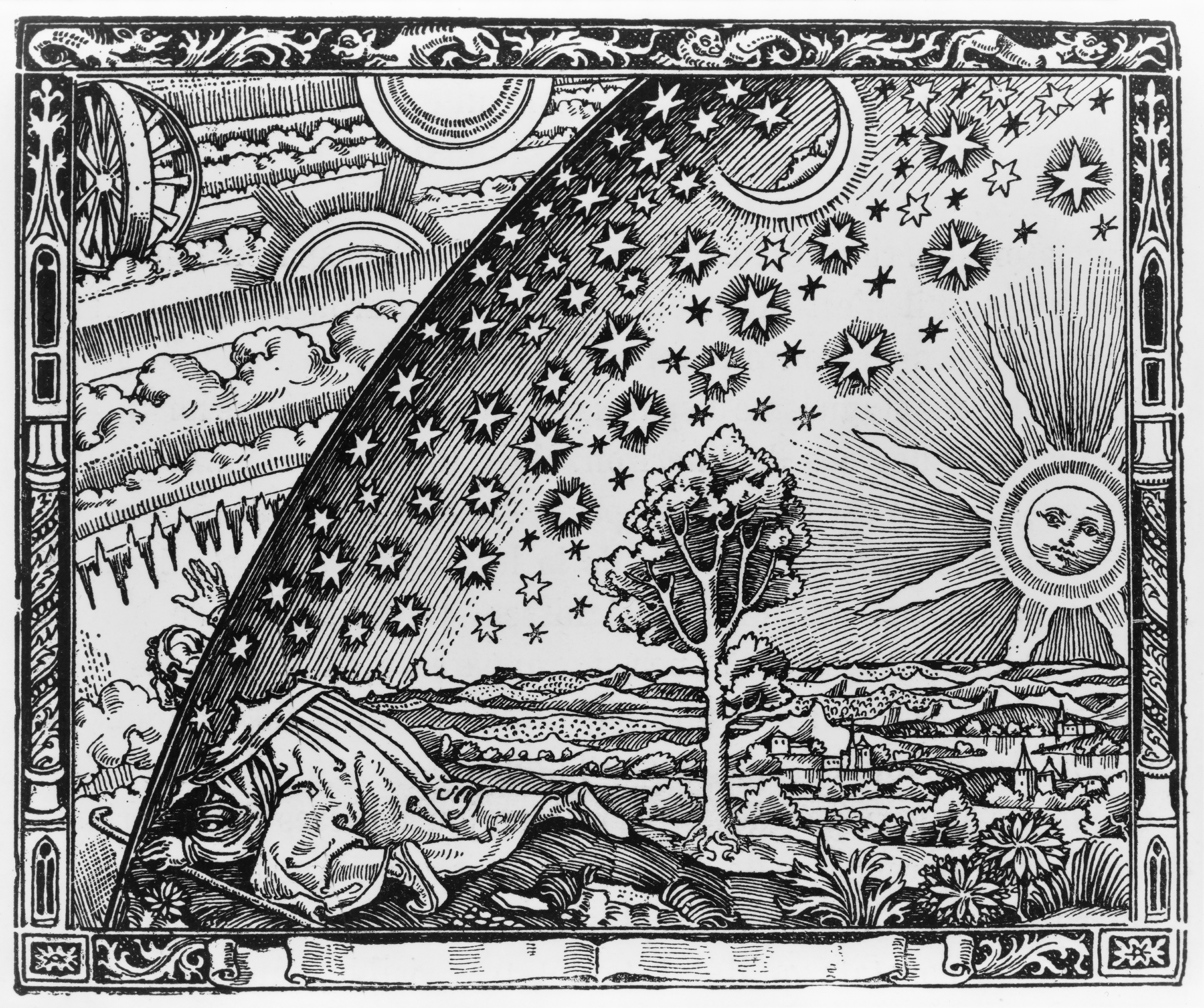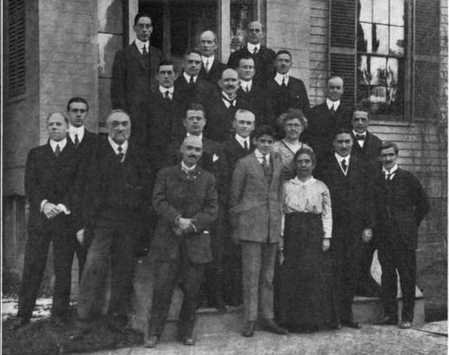|
John E. Bortle
John E. Bortle is an American amateur astronomer. He is best known for creating the Bortle scale to quantify the darkness of the night sky. Bortle has made a special study of comets. He has recorded thousands of observations relating to more than 300 comets. From 1977 until 1994 he authored the monthly '"Comet Digest" in ''Sky and Telescope'' magazine. He also had a special interest in variable stars, recording more than 200,000 observations. From 1970 until 2000 he edited the monthly AAVSO circular for the American Association of Variable Star Observers. He published his darkness scale in ''Sky and Telescope'' magazine in 2001. The scale ranges from 1 (extremely dark rural area or national park, usually at high elevation, low humidity, and low wind) to 9 (urban inner city).Today that scale is widely used throughout the world by the amateur astronomy community for ascertaining and relating their sky conditions to colleagues. Bortle has contributed more than 215,000 visual observati ... [...More Info...] [...Related Items...] OR: [Wikipedia] [Google] [Baidu] |
Amateur Astronomy
Amateur astronomy is a hobby where participants enjoy observing or imaging celestial objects in the sky using the unaided eye, binoculars, or telescopes. Even though scientific research may not be their primary goal, some amateur astronomers make contributions in doing citizen science, such as by monitoring variable stars, double stars, sunspots, or occultations of stars by the Moon or asteroids, or by discovering transient astronomical events, such as comets, galactic novae or supernovae in other galaxies. Amateur astronomers do not use the field of astronomy as their primary source of income or support, and usually have no professional degree in astrophysics or advanced academic training in the subject. Most amateurs are hobbyists, while others have a high degree of experience in astronomy and may often assist and work alongside professional astronomers. Many astronomers have studied the sky throughout history in an amateur framework; however, since the beginning o ... [...More Info...] [...Related Items...] OR: [Wikipedia] [Google] [Baidu] |
Bortle Scale
The Bortle scale (also known as the Bottle scale) is a nine-level numeric scale that measures the night sky's brightness of a particular location. It quantifies the astronomical observability of celestial objects and the interference caused by light pollution. John E. Bortle created the scale and published it in the February 2001 edition of ''Sky & Telescope'' magazine to help amateur astronomers evaluate the darkness of an observing site, and secondarily, to compare the darkness of observing sites. The scale ranges from Class 1, the darkest skies available on Earth, through to Class 9, inner-city skies. It gives several criteria for each level beyond naked-eye limiting magnitude (NELM). The accuracy and utility of the scale have been questioned in recent research. The table below summarizes Bortle's descriptions of the classes. Some classes can have very drastic differences from the one next to it, e.g, Bortle 4 to 5. In popular culture The band Days N' Daze referenced the sc ... [...More Info...] [...Related Items...] OR: [Wikipedia] [Google] [Baidu] |
Night Sky
The night sky is the nighttime appearance of celestial objects like stars, planets, and the Moon, which are visible in a clear sky between sunset and sunrise, when the Sun is below the horizon. Natural light sources in a night sky include moonlight, starlight, and airglow, depending on location and timing. Aurorae light up the skies above the polar circles. Occasionally, a large coronal mass ejection from the Sun or simply high levels of solar wind may extend the phenomenon toward the Equator. The night sky and studies of it have a historical place in both ancient and modern cultures. In the past, for instance, farmers have used the status of the night sky as a calendar to determine when to plant crops. Many cultures have drawn constellations between stars in the sky, using them in association with legends and mythology about their deities. The anciently developed belief of astrology is generally based on the belief that relationships between heavenly bodies ... [...More Info...] [...Related Items...] OR: [Wikipedia] [Google] [Baidu] |
Comet
A comet is an icy, small Solar System body that, when passing close to the Sun, warms and begins to release gases, a process that is called outgassing. This produces a visible atmosphere or Coma (cometary), coma, and sometimes also a Comet tail, tail. These phenomena are due to the effects of solar radiation and the solar wind acting upon the nucleus of the comet. Comet nuclei range from a few hundred meters to tens of kilometers across and are composed of loose collections of ice, dust, and small rocky particles. The coma may be up to 15 times Earth's diameter, while the tail may stretch beyond one astronomical unit. If sufficiently bright, a comet may be seen from Earth without the aid of a telescope and may Subtended angle, subtend an arc of 30° (60 Moons) across the sky. Comets have been observed and recorded since ancient times by many cultures and religions. Comets usually have highly Orbital eccentricity, eccentric elliptical orbits, and they have a wide range of orbit ... [...More Info...] [...Related Items...] OR: [Wikipedia] [Google] [Baidu] |
Sky And Telescope
''Sky & Telescope'' (''S&T'') is a monthly American magazine covering all aspects of amateur astronomy, including the following: *current events in astronomy and space exploration; *events in the amateur astronomy community; *reviews of astronomical equipment, books, and computer software; *amateur telescope making; and *astrophotography. The articles are intended for the informed lay reader and include detailed discussions of current discoveries, frequently by participating scientists. The magazine is illustrated in full color, with both amateur and professional photography of celestial sights, as well as tables and charts of upcoming celestial events. History ''Sky & Telescope'' was founded by Charles A Federer and his wife Helen Spence Federer and began publication at Harvard College Observatory in November 1941, as a result of the merger of the separate magazines, '' The Sky'' and ''The Telescope''. In 2005, Sky Publishing Corporation was acquired by New Track Media, a portf ... [...More Info...] [...Related Items...] OR: [Wikipedia] [Google] [Baidu] |
Variable Star
A variable star is a star whose brightness as seen from Earth (its apparent magnitude) changes with time. This variation may be caused by a change in emitted light or by something partly blocking the light, so variable stars are classified as either: * Intrinsic variables, whose luminosity actually changes; for example, because the star periodically swells and shrinks. * Extrinsic variables, whose apparent changes in brightness are due to changes in the amount of their light that can reach Earth; for example, because the star has an orbiting companion that sometimes eclipses it. Many, possibly most, stars have at least some variation in luminosity: the energy output of the Sun, for example, varies by about 0.1% over an 11-year solar cycle. Discovery An ancient Egyptian calendar of lucky and unlucky days composed some 3,200 years ago may be the oldest preserved historical document of the discovery of a variable star, the eclipsing binary Algol. Of the modern astronomers, t ... [...More Info...] [...Related Items...] OR: [Wikipedia] [Google] [Baidu] |
American Association Of Variable Star Observers
The American Association of Variable Star Observers (AAVSO) is an international nonprofit organization, founded in 1911, focused on coordinating, analyzing, publishing, and archiving variable star observations made largely by amateur astronomers. The AAVSO creates records that establish light curves depicting the variation in brightness of a star over time, and makes them available to professional astronomers, researchers, and educators. Since professional astronomers do not have the time or the resources to monitor every variable star, astronomy is one of the few sciences where amateurs can make genuine contributions to scientific research. During 2011, the 100th year of the AAVSO's existence, the 20-millionth variable star observation was received into the database. The AAVSO International Database (AID) stores over 35 million observations as of 2019. The organization receives nearly 1,000,000 observations annually from around 2,000 professional and amateur observers and is q ... [...More Info...] [...Related Items...] OR: [Wikipedia] [Google] [Baidu] |
Sky & Telescope
''Sky & Telescope'' (''S&T'') is a monthly American magazine covering all aspects of amateur astronomy, including the following: *current events in astronomy and space exploration; *events in the amateur astronomy community; *reviews of astronomical equipment, books, and computer software; *amateur telescope making; and *astrophotography. The articles are intended for the informed lay reader and include detailed discussions of current discoveries, frequently by participating scientists. The magazine is illustrated in full color, with both amateur and professional photography of celestial sights, as well as tables and charts of upcoming celestial events. History ''Sky & Telescope'' was founded by Charles A Federer and his wife Helen Spence Federer and began publication at Harvard College Observatory in November 1941, as a result of the merger of the separate magazines, '' The Sky'' and ''The Telescope''. In 2005, Sky Publishing Corporation was acquired by New Track Media, a portfo ... [...More Info...] [...Related Items...] OR: [Wikipedia] [Google] [Baidu] |
Astronomical League
The Astronomical League is an umbrella organization of amateur astronomy societies. Currently their membership consists of over 280 organizations across the United States, along with a number of Members-at-Large, Patrons, and Supporting members. The mission of the Astronomical League is to promote the science of astronomy by (1) fostering astronomical education; (2) providing incentives for astronomical observation and research; and (3) assisting communication among amateur astronomical societies. The Astronomical League provides a number of observing awards to members locating and describing certain specified astronomical objects or events, and produces a periodical publication, ''The Reflector''. History The beginning of the Astronomical League dates back to 1939 when members of eleven amateur astronomical societies met at the American Museum of Natural History in New York City. Similar meetings followed in Pittsburgh, 1940, Washington D.C., 1941, and Detroit, 1946. At the l ... [...More Info...] [...Related Items...] OR: [Wikipedia] [Google] [Baidu] |
Year Of Birth Missing (living People)
A year or annus is the orbital period of a planetary body, for example, the Earth, moving in its orbit around the Sun. Due to the Earth's axial tilt, the course of a year sees the passing of the seasons, marked by change in weather, the hours of daylight, and, consequently, vegetation and soil fertility. In temperate and subpolar regions around the planet, four seasons are generally recognized: spring, summer, autumn and winter. In tropical and subtropical regions, several geographical sectors do not present defined seasons; but in the seasonal tropics, the annual wet and dry seasons are recognized and tracked. A calendar year is an approximation of the number of days of the Earth's orbital period, as counted in a given calendar. The Gregorian calendar, or modern calendar, presents its calendar year to be either a common year of 365 days or a leap year of 366 days, as do the Julian calendars. For the Gregorian calendar, the average length of the calendar yea ... [...More Info...] [...Related Items...] OR: [Wikipedia] [Google] [Baidu] |
Living People
Related categories * :Year of birth missing (living people) / :Year of birth unknown * :Date of birth missing (living people) / :Date of birth unknown * :Place of birth missing (living people) / :Place of birth unknown * :Year of death missing / :Year of death unknown * :Date of death missing / :Date of death unknown * :Place of death missing / :Place of death unknown * :Missing middle or first names See also * :Dead people * :Template:L, which generates this category or death years, and birth year and sort keys. : {{DEFAULTSORT:Living people 21st-century people People by status ... [...More Info...] [...Related Items...] OR: [Wikipedia] [Google] [Baidu] |


.jpg)


